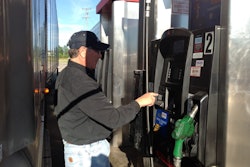The Trucking Law segment is a new monthly feature on Overdrive, in which we pose commonly asked questions from truckers and owner-operators to legal experts. In this installment, Dr. Alexander E. Underwood addresses how drivers can return to work after a heart attack and why a urine test is needed for a physical.
How soon can I get back to driving after a heart attack?
Unfortunately, the rate of cardiovascular disease and incidence of myocardial infarction, commonly known as a heart attack, is significantly higher among truckers than the national average.
Many drivers who’ve experienced heart attacks have returned to work, but the Federal Motor Carrier Safety Administration has established some time-consuming hurdles to ensure you don’t pose a safety risk.
After a heart attack, you will be hospitalized from one day to several weeks. To return to driving, your cardiologist will need to clear you in writing. You’ll also have to have a satisfactory stress test and a test showing at least 40 percent with your left ventricular ejection fraction (LVEF), a measure of how well your heart is pumping.
Then you still face a mandatory two-month waiting period before you can resume commercial driving. If you do not tolerate your medications or cannot meet the stress testing and LVEF standards, you will be disqualified from driving.
Otherwise, you then can go to a certified medical examiner for your CDL physical. As someone who’s had a heart attack, your certification will now be limited to one year. FMCSA also requires you to pass a stress test at least every two years.








